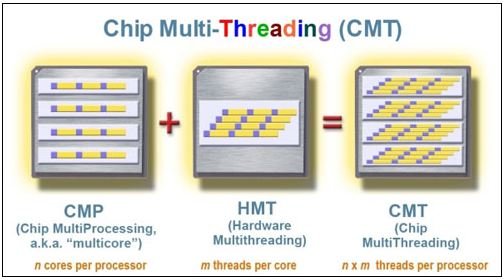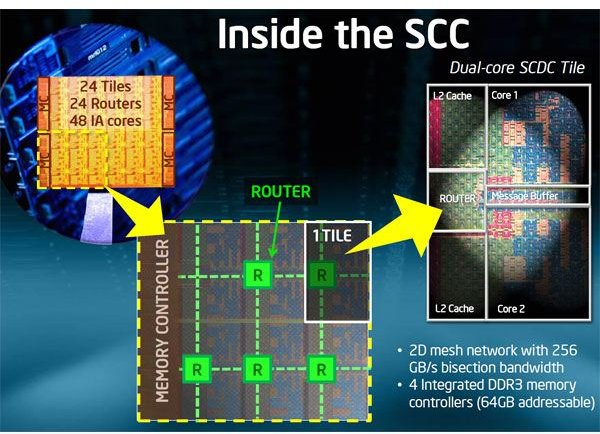Reviewing The Newest Intel Processors
The Intel Processor Chip
The push for faster processors has been going on for more than a decade. Intel and other chip makers have used a variety of technological advances from using smaller manufacturing dies to adding millions of transistors on the chip to create smaller but more powerful CPU’s. This phenomenon is known as Moore’s law. It describes the trend in computing hardware in which the number of transistors placed on a chip doubles around every 24 months.
For example, in July 2006, Intel released the Core 2 Duo Processor with 253 million transistors. Then several months later the Core 2 Extreme was released that had 582 million transistors. By having more transistors the chip can be designed with additional features, more cores, greater speed, and more cache. These ingredients are essential as benchmarks for the next generation of chip. This technology is a harbinger of how the future chips will develop.
The Itanium and Xeon Processors
Intel has a large family of chips. Two of the most popular for severs are the Itanium and the Xeon. The Itanium is designed to replace the x86 chip set which has been around since the early 70’s; this is the chip set for the PC. But it is designed for high end servers and runs primarily on Unix based operating systems computers. The Xeon on the other hand continues the x86 tradition, and has made many advances to the CPU. The Itanium and Xeon family of chips are designed around the 32/64 bit construction with multiple cores.
The Itanium Chip Family
Itanium-based servers work on systems for demanding workloads, such as database operations, business intelligence, and enterprise resource planning (ERP) applications. This is a system that provides 64 bit support. The latest iteration is the Itanium 9300 Tukwila which was release in February 2010. This processor has 2 billion transistors, with four cores that can run eight instruction threads each. Think of a core as a special CPU inside of a CPU, actually it is an integrated circuit. With the cores technology the Itanium will benefit with an 800 percent improvement in interconnect bandwidth, 500 percent more memory bandwidth and up to 700 percent more memory capacity over earlier CPU’s.
Some other features are the QuickPath Interconnect, which is used to connect the processor to the Input/Output (IO) Hub. the Scalable Memory Interconnect, and the Scalable Memory Buffer. The Scalable Memory Buffer helps the chip take better advantage of double data rate 3 memory (DDR3).
The Itanium chips also practice “green” technology in that it can reduce power consumption when chip utilization is low. Intel’s Turbo Boost technology enables users to scale the power to individual cores up or down.
The Xeon Family
The Xeon chip is a part of the x86 microprocessors family targeted at the business servers, workstations, and embedded systems. It will run 32 bit or 64 bit processors. It comes with two new technologies, Turbo Boost, which increases processor frequency and Hyper-Threading, which is used to improve parallelization, or doing multiple tasks at once. It will also automatically regulate power consumption and it uses virtualization technology, which when combined with software-based virtualization solutions, brings together multiple environments into a single server or PC.
The newest Xeon chip, the 7500, comes with either six or eight cores, depending on the model, and it makes them up to eight times faster and more efficient than a single-core chip. For example, a server running the Xeon 7500 processor could replace as many as 20 older servers.
The Intel Xeon ‘Nehalem-EX’ 8-Core Processor
The Nehalam-Ex chip is the most recent release of the Intel processors. it is also part of the Xeon 7500 series line, and it will make one of the largest performance leaps in CPU operations. With it there will be an average three-fold jump in performance.

According to Intel, the 7500 series chips and chipsets can scale from 2 to 256 chips per server. These chips are intended to work on servers devoted to high performance operations.
Performance features
- 64 bit technology
- It has 8 cores per processor with 16 threads per processor
- It has Intel Hyper-threading
- 24MB of shared cache
- Integrated memory controllers
The threading performance takes an instruction set and breaks it down into component threads where each is processed separately and recombined. The more threads, the quicker the results will be available from the execution of the instruction set.

This chip is already in production. The computer and technology manufacturers that will be implementing the chip are Cisco, Cray, Dell, Fujitsu, Hitachi, HP, IBM, NEC, Oracle, SGI, Supermicro, Bull, and Quanta.
Source Intel
The Intel 48 Core Chip
Intel is also working on a 48 core chip known by the name “Single-chip Cloud Computer.” The architecture resembles a scalable cluster of computers that you would find in a cloud, but instead integrated into a silicon chip. Here are some of the features that make it stand out.
- 24 “tiles” containing two integrated Architecture cores per tile = 48 core
- A 24-router mesh network with 256 GB/s bisection bandwidth
- 4 memory controllers with integrated DDR3
- Hardware support for message-passing that communicates between Cache and the Core

The power supply draw for the 48-core processor will be between 25 and 125 Watts. The large difference is due to the chip’s ability to power down groups of processing cores when they are not actively in use.
Summary
Intel is making big advances in chip design. By reviewing the latest Intel processors, it is clear that the Itanium and Xeon family of chips mark significant changes in how the CPU will process data. New developments show up in the number of cores in the system. The single core of years ago has been replaced with dual, quad, and eight core technology. Coming along still is the 48 core technology chip which will change how operating systems are designed to take advantage of the multifaceted chip. Some of the technology concepts that have been reserved for the area of science fiction, may actually become possible now.
